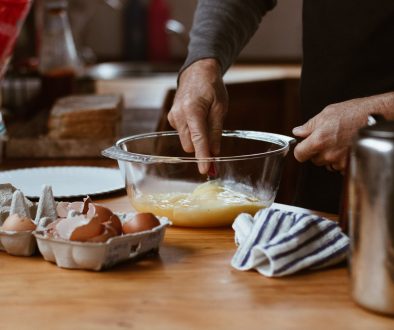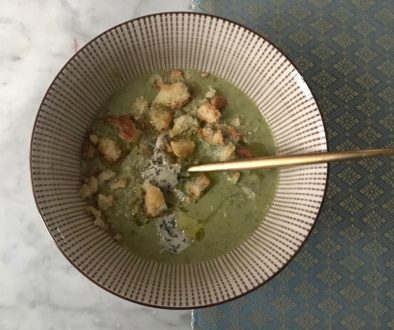Recipe Review Methodology
1. Taste & Flavor
A. Balance of Flavors (Is there harmony between sweet, salty, sour, bitter, and umami?)
⭐⭐⭐⭐⭐ – Flavors are perfectly balanced and complement each other.
⭐⭐⭐⭐ – Well-balanced but could use slight tweaking (e.g., more acid or seasoning).
⭐⭐⭐ – Noticeable imbalance (e.g., too salty, too sweet, too bland).
⭐⭐ – One dominant flavor overwhelms the dish.
⭐ – Clashing or unpleasant flavors.
B. Depth & Complexity (Does the flavor evolve as you eat it?)
⭐⭐⭐⭐⭐ – Multiple layers of flavor that develop with each bite.
⭐⭐⭐⭐ – Good complexity but slightly flat in some areas.
⭐⭐⭐ – Simple flavor profile; enjoyable but one-dimensional.
⭐⭐ – Basic with little depth; feels incomplete.
⭐ – Flat and uninspired.
C. Proper Seasoning (Is it adequately salted, spiced, and balanced?)
⭐⭐⭐⭐⭐ – Perfect seasoning enhances all flavors.
⭐⭐⭐⭐ – Slight under- or over-seasoning but still tasty.
⭐⭐⭐ – Noticeably under- or over-seasoned, requiring adjustment.
⭐⭐ – Poor seasoning negatively affects the dish.
⭐ – Completely misses the mark (bland or inedible).
D. Texture Complementing Flavor (Does the texture enhance the taste experience?)
⭐⭐⭐⭐⭐ – Textures align beautifully with flavors (e.g., crunchy topping on creamy pasta).
⭐⭐⭐⭐ – Good textural contrast but could be improved.
⭐⭐⭐ – Acceptable but lacks variety or synergy.
⭐⭐ – Texture clashes with the intended flavor.
⭐ – Wrong or off-putting texture ruins the flavor.
2. Ease of Preparation
A. Clarity of Instructions (Are the steps easy to follow and logically ordered?)
⭐⭐⭐⭐⭐ – Crystal-clear, step-by-step instructions with no guesswork.
⭐⭐⭐⭐ – Mostly clear, but minor clarifications could improve flow.
⭐⭐⭐ – Some vague or ambiguous steps that require interpretation.
⭐⭐ – Confusing or disorganized instructions leading to mistakes.
⭐ – Incomplete or poorly written steps that hinder success.
B. Complexity of Techniques (Are the required skills appropriate for the average home cook?)
⭐⭐⭐⭐⭐ – Straightforward techniques that any cook can follow.
⭐⭐⭐⭐ – Moderate skills needed (e.g., searing, folding) but well-explained.
⭐⭐⭐ – Advanced methods used without detailed guidance.
⭐⭐ – Involves difficult techniques not suited for the intended audience.
⭐ – Overly complex with no support for challenging steps.
C. Time Investment vs. Payoff (Does the time spent cooking feel justified by the result?)
⭐⭐⭐⭐⭐ – Quick or time-intensive but entirely worth the effort.
⭐⭐⭐⭐ – Slightly more time-consuming than expected but results are solid.
⭐⭐⭐ – Time-heavy with only decent results.
⭐⭐ – Laborious for underwhelming outcomes.
⭐ – Excessively time-consuming with disappointing results.
D. Ingredient & Tool Requirements (Are the necessary tools and prep reasonable?)
⭐⭐⭐⭐⭐ – Uses basic kitchen tools and simple prep techniques.
⭐⭐⭐⭐ – Requires moderate prep or common specialty tools (e.g., blender).
⭐⭐⭐ – Several uncommon tools or prep steps but manageable.
⭐⭐ – Niche tools or time-intensive prep with no alternatives.
⭐ – Impractical tools or complex prep make the recipe difficult to attempt.
3. Accuracy & Clarity – Does this recipe deliver promised results?
A. Recipe Outcome vs. Expectations (Does the final dish match the description or photo?)
⭐⭐⭐⭐⭐ – Looks and tastes exactly as described or shown.
⭐⭐⭐⭐ – Very close to the intended outcome with minor differences.
⭐⭐⭐ – Noticeable but non-critical differences (e.g., slight texture/color variations).
⭐⭐ – Significant discrepancies that affect presentation or taste.
⭐ – Final result is unrecognizable compared to the original.
B. Correctness of Measurements & Cook Times (Are ingredient quantities and cook times accurate?)
⭐⭐⭐⭐⭐ – Spot-on measurements and timing yield perfect results.
⭐⭐⭐⭐ – Slight tweaks needed (e.g., 1–2 extra minutes of baking or seasoning).
⭐⭐⭐ – Several adjustments required for the desired result.
⭐⭐ – Incorrect cook times or measurements leading to over/undercooked or poorly seasoned dishes.
⭐ – Major errors make the recipe nearly impossible to replicate as intended.
C. Clarity of Instructions for Critical Steps (Are key moments like baking, searing, or resting clearly explained?)
⭐⭐⭐⭐⭐ – Detailed guidance at crucial points ensures success.
⭐⭐⭐⭐ – Minor clarifications needed but overall understandable.
⭐⭐⭐ – Important steps lack detail, requiring guesswork.
⭐⭐ – Vague or missing instructions result in potential errors.
⭐ – Misleading or absent steps cause recipe failure.
D. Serving Size & Yield Accuracy (Does the recipe produce the stated number of servings?)
⭐⭐⭐⭐⭐ – Perfectly matches stated servings and portion sizes.
⭐⭐⭐⭐ – Slight variance in yield but close enough.
⭐⭐⭐ – Off by 1–2 servings or inconsistent portion sizes.
⭐⭐ – Noticeably inaccurate yield, leading to shortages or waste.
⭐ – Completely inaccurate, misguiding meal planning.
4. Ingredient Accessibility – How easy is it to source the required ingredients?)
A. Availability of Ingredients (Can you find the ingredients in a regular grocery store?)
⭐⭐⭐⭐⭐ – Uses common, easy-to-find ingredients.
⭐⭐⭐⭐ – Includes 1–2 specialty items that most stores carry.
⭐⭐⭐ – Several ingredients may require trips to specialty markets.
⭐⭐ – Hard-to-find or seasonal ingredients limit accessibility.
⭐ – Extremely niche or international ingredients unlikely to be locally available.
B. Cost-Effectiveness (Is the recipe budget-friendly?)
⭐⭐⭐⭐⭐ – Affordable for most households.
⭐⭐⭐⭐ – Slightly above average cost but still reasonable.
⭐⭐⭐ – Moderate expense with premium ingredients.
⭐⭐ – Pricey overall with limited affordable substitutions.
⭐ – Very expensive or reliant on luxury ingredients.
C. Flexibility & Substitution Options (Can ingredients be swapped without affecting the result?)
⭐⭐⭐⭐⭐ – Easy-to-substitute ingredients for dietary or budget needs.
⭐⭐⭐⭐ – Some flexibility but key ingredients need to stay.
⭐⭐⭐ – Limited swap options without affecting quality.
⭐⭐ – Few or no viable substitutions.
⭐ – Ingredient swaps break the recipe.
D. Quantity of Ingredients (Is the ingredient list manageable?)
⭐⭐⭐⭐⭐ – Simple, concise list of essentials.
⭐⭐⭐⭐ – Slightly long list, but most items are basic.
⭐⭐⭐ – Ingredient-heavy but justified by complexity.
⭐⭐ – Overly long or complex list that could be simplified.
⭐ – Excessive number of ingredients, complicating prep.
5. Overall Success & Repeatability – Was the dish worth making, and would you make it again?
A. Satisfaction of End Result (Did the final dish meet expectations in taste, texture, and presentation?)
⭐⭐⭐⭐⭐ – Exceeded expectations; a standout dish.
⭐⭐⭐⭐ – Very satisfying but minor improvements possible.
⭐⭐⭐ – Acceptable result, though not remarkable.
⭐⭐ – Underwhelming or lacked intended impact.
⭐ – Disappointing or inedible result.
B. Willingness to Repeat (Would you make this again?)
⭐⭐⭐⭐⭐ – Absolutely, it’s going into regular rotation.
⭐⭐⭐⭐ – Yes, with minor tweaks next time.
⭐⭐⭐ – Maybe, but only for specific occasions.
⭐⭐ – Unlikely, unless heavily modified.
⭐ – No, wouldn’t make again.
C. Crowd-Pleaser Potential (Would others enjoy it?)
⭐⭐⭐⭐⭐ – Universally appealing; guests would love it.
⭐⭐⭐⭐ – Likely to be well-received by most.
⭐⭐⭐ – Mixed reactions expected but still solid.
⭐⭐ – Limited appeal; only suits certain tastes.
⭐ – Few would enjoy it.
D. Recipe Reliability (Can this recipe be trusted as-is in the future?)
⭐⭐⭐⭐⭐ – Reliable and easy to replicate with consistent results.
⭐⭐⭐⭐ – Mostly consistent, with minor variables.
⭐⭐⭐ – Success depends on close attention to details.
⭐⭐ – Inconsistent results or requires major adjustments.
⭐ – Completely unreliable.


